
Blips
Pac-Kojak? Move Over Deputy Dawg
As if Inky, Blinky, Pinky and Clyde weren’t enough to contend with, now Pac-Man has the Nielsen ratings to worry about, too.
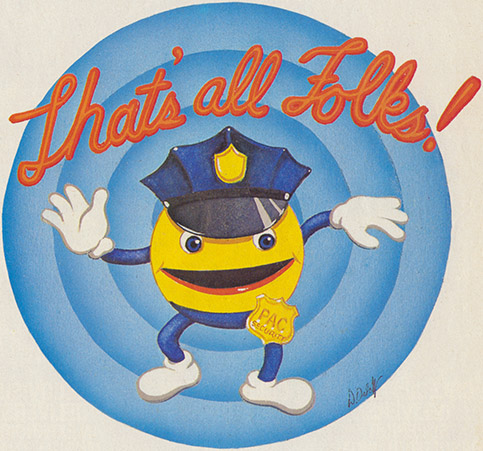
In September, Pac-Man debuted on the Saturday morning airwaves with a half-hour show all to his own. Arriving at 9 a.m. on ABC-TV, Pac-Man (the voice of Marty Ingels) features the little yellow fellow as a security guard in the Power Pellet forest. His job—to protect the energy food of the local Paclanders—is made that much more difficult by the presence of the evil Mezmaron (Allan Lurie) and his five ghostly accomplices. Joining Blinky and Pinky (the voices of Chuck McCann), Inky (Barry Gordon), and Clyde (Nielson Ross) is a she-ghost named Sue Monster (Susan Silo).
After hours, Pac-Man, who has sprouted limbs for his TV series, is a family man married to Ms. Pac-Man (Barbara Mincus), with a child, Baby Pac (Russie Taylor), a pup called Chomp Chomp (Frank Welker), and a kitty, Sour Puss (Peter Cohen) rounding out their happy home.
The series comes from Hanna-Barbera which is also planning a half-hour prime time Pac-Man Christmas special.
—Sue Adamo
Are You Game Enough to Join a Club?
So you’re a video game freak and you want to get piped into other game freaks to trade tips, cartridges, and stories about high scores. No problem. Networks of video game fanatics are springing up as fast as you can pop a cartridge into your “Atari,” and they’re just waiting for you to sign up. Here’s a list of a few organizations and what they offer:
The Video Game Club (membership fee: $2.50), which boasts a membership of more than 11,000, offers a selection of TV-game cartridges at only one dollar above its cost (you can order Defender for $26.50) and a newsletter, and also sponsors contests like the recent Astrosmash tourney, which awarded prizes of up to $1,000 cash. Write: 4501 W. Aster Dr., Glendale, Ariz. 83504.
Xantor (one-time membership: $25) sells cartridges at a 15 to 25 percent discount (Defender goes for $27 .95) and has an exchange service that allows you to unload unwanted carts for new but comparably priced ones and a $6 trade-in fee. Its newsletter includes previews of soon-to-be-available carts and gaming tips. If you can prove with a photo that your score at a particular game is the best, Xantor will let the world know in the newsletter. Write: P.O. Box 5466, Scottsdale, Ariz. 85216.
The American Video Athletes Association ($12.50) contends that master video gamers should be recognized like other outstanding athletes. For the membership fee, you get a pocket guide to video athletics, rating levels for arcade games, a t-shirt, and a newletter focusing on said video athletes. Write: Badger Office Building, 120 W. Mifflin, Madison, Wis. 53703.
The National Video Games Players Association ($15) provides members with a certificate, I.D. cards, t-shirt and newsletter that includes names of current coin-op high scorers, game tips and reviews. Write: P.O. Box. 280797, Dallas, Tex. 75228.
G.A.M.E.S. ($2) is basically a direct mail TV-game outlet. A newsletter informs members of its ever-growing catalog of cartridges and accessories as well as, well … news. Plus, buy ten carts, get one free! Write: 6626 Valjean Ave., Van Nuys, Calif. 91406.
Screen Sonics ($1) also has an extensive TV-game product catalog. Members receive discounts as well as the opportunity to exchange cartridges (only comparably priced ones) for $3.50 and purchase reconditioned game systems.
Not to be outdone by this band of video game entrepreneurs, Mattel, Atari, Magnavox and Activision have authorized their own game clubs. You know you’re a member of the Intellivision Game Club ($1.50) when you receive an I.D. card and certificate signed by George Plimpton. Convince three friends to join at once and Plimpton sends you a $2.50 voucher towards your next cart purchase. A newsletter keeps everyone up-to-date on tourneys and new products. Write: P.O. Box Drawer No. 666, Milwaukee, Wis. 53278.
As an Atari Club ($1) member, you get a two-year subscription to Atari Age, a full-color magazine that previews cartridges, advertises accessories and gift items and, best of all, reminds readers of forgotten VCS carts like Maze Craze and Codebreaker. You also receive a $2 voucher towards the purchase of a new cart through the club. Write: 1700 Walnut St., Philadelphia, Pa. 19103.
To become a member of the Odyssey Adventure Club, you first must purchase a subscription to Odyssey Adventure, the company’s quarterly magazine for $3. Inside, you’ll find premium offers for accessory items, game tips, high scores, articles about Odyssey “adventures” and certificates and I.D. cards to clip and save. Write: 30400 Van Dyke, Warren, Mich. 48093
Activision, on the other hand, has about as many clubs as it does cartridges. Send in photos of high scores taken off the TV screen and you may, for instance, become a member of the “Laser Blast Hall of Fame” just like the brothers Nichols. (Jason, 6, and Stephen, 5, both qualified when they totaled one million points at Laser Blast each). Write: 2350 Bayshore Frontage Rd., Mountain View, Calif. 94043.
Finally, there is Ken Uston’s Newsletter ($9.95/year). Brought to you by one of the game industry’s foremost authorities, each month it includes all the gamer news that’s fit to print. Uston’s personalized prose is well worth the price of admission. Write: Uston Video Enterprises, P.O. Box 8080, Walnut Creek, Calif. 94596.
—Perry Greenberg
Siggraph ‘82: State of the (Computer) Art
“The crowd was incredibly excited. You felt a real sense of discovery in the air.”
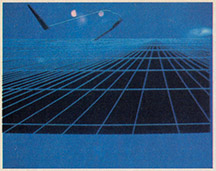
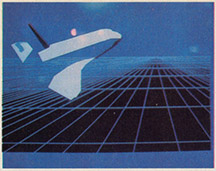
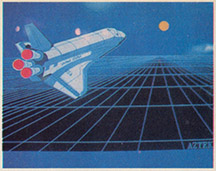
If you’ve seen Tron, the movie, and played Zaxxon and Turbo, the video games, you’re well aware of the fantastic visuals computers are now capable of creating. But if you were among the thousands of art directors, engineers, designers and curiosity seekers who converged on Boston’s cavernous Hynes Auditorium for Siggraph ‘82 the last week in July, you were treated to an even more revealing glimpse of the latest developments in the explosive world of computer imaging.
The show sent heads spinning, dazzling the overflow crowd with sophisticated state-of-the-art machinery. Reports VIDEO GAMES photographer Mike Uffer, whose work adorns this page: “The crowd was incredibly excited. A lot of people were there who had never been exposed to this before. You felt a real sense of discovery in the air.”
For video gamers one thing was especially clear: Computer graphics technology is changing so rapidly it will make the game graphics of today seem prehistoric no later than three years from now. Computer images are finally becoming more natural and lifelike. Though created by complex calculations, they appear photographic-like so many of the landscapes in Tron that give the illusion of sets.
Aztec’s Space Shuttle simulation (pictured in sequence above) is comparable to Zaxxon’s graphics in many respects. Here, a computer-generated image takes shape. Techtronics exhibited a three-dimensional graph of the earth’s surface after the Mount St. Helens eruption (middle row, left), while Jupiter Technology provided a 3-D look at molecular binding (middle row, center). The program was written by a chemist. The last four images are all creations of Raster Technologies. For each, a computer completes an artist’s rough sketch by adding necessary details, plus shadows.
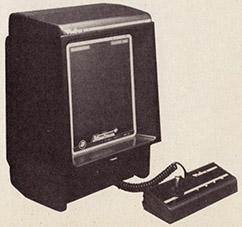
What’s New
The latest in gamer accessories are these TV carts. Gusdorf has two sizes—13 ($50)and 19 ($80)inches. Look for them at K-Mart, Of Pyramid’s two models, one is especially made for the Atari VCS. Both sell for $70 at specialty shops. (Or write: 8774 Grinnell, Detroit, Mich. 48213.) GCE’s Vectrex is about as unique a self-contained game system as you’ll ever see. A nine-inch vector monitor allows you to play any number of arcade-type games like Berzerk, Scramble and Rip-Off The price: $200, plus $30 for each cart. (Mine Storm, a great Asteroids game, is included.) Arcadia’s Supercharger adds 6,272 bytes of RAM to the VCS’ 128 for $70. Its games are on cassette ($15) and all look great. If you have a tape player, you’re set.
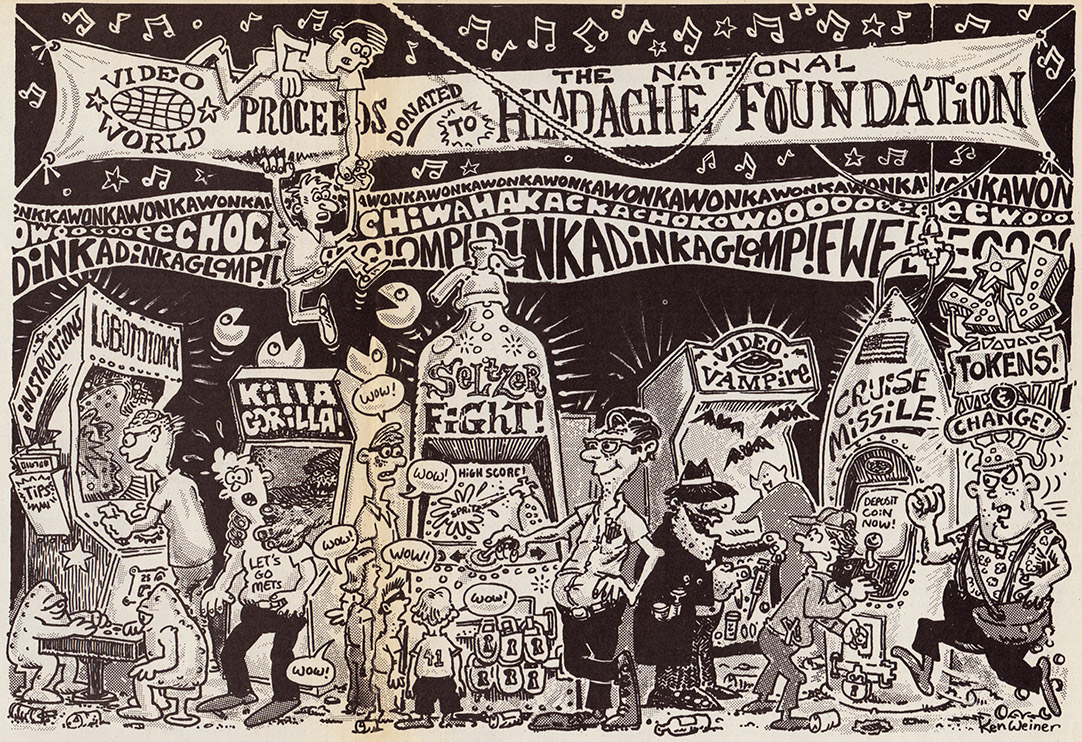
Report: Drugs in Arcades
You’ve probably heard about parents and community groups trying to close down arcades because they’re supposedly hang-outs for drug pushers and users. Are there really drugs to be found in arcades? In search of an answer to this nagging question, VIDEO GAMES dispatched crack coin-op scribe John Holmstrom to New York’s “Arcade Row” in Times Square and several Brooklyn gaming establishments. Holmstrom came back with this report.
I’ve been around arcades for as long as I can remember, and I’ve been around drugs since high school. Although drugs have always been freely available in Times Square, where I’ve been playing for years, pushers usually have avoided the arcades. Not any more.
Recently, as I was entering the Fascination arcade, some strange guy demanded that I buy drugs—pot, cocaine, pills—from him. There he was, drumming up business outside the door, and the next thing I knew he had followed me inside. If it weren’t for one of the changers, who chased him back out onto Broadway, I might have had to get rough with him.
Times Square is, of course, the sleaze pit of the universe, and is not really a fair barometer of what’s going on in arcades around the country. Still, I see more peddlers and prostitutes loitering near the Playlands these days than I can ever remember. There is little or no security in these places. If something isn’t done about the Times Square scene soon, the industry can expect nothing but more bad publicity.
Brooklyn, I thought, would be a different story. First stop: King’s Plaza, a typical suburban-style mall. Except for the 50-cent price tag on all the games, I could find little evidence of wrong-doing in this arcade. It was clean, secure and not particularly crowded. But could I buy drugs here if I so desired? Yes, explained my Brooklyn escort—just mention it to the right person and wait around the arcade to make the deal. We decided not to wait.
As it turned out, the farther we got away from the arcades, the seamier the scene became. There was the newsstand with machines in the back and a crowd hanging out front—anyone could have filled my prescription right on the spot—and the pizza parlor that featured games, chow and nickel bags if you asked for a small coke. And then I learned about the social club that has games, dames and just about everything else.
Let’s face it—drugs can always be found where some form of entertainment is going on. Drugs are everywhere: Hollywood, sports, movie theatres, rock concerts, baseball stadiums. In fact, I’d say it’s easier to score drugs in Yankee Stadium than in any arcade I’ve ever frequented. Does that mean we should close down Yankee Stadium?
The bottom line then is that if you want to score in an arcade, there’s a strong chance you’ll be able to do just that. But that’s between you and the dealer. Most people I spoke with have never witnessed a drug sale in an arcade. “Sure, something should be done about drug abuse,” one gamer told me, “but if anyone thinks that closing down arcades is the solution, they’re crazy.”
Scores: All in a Day’s Work
When Walter Day isn’t too busy racking up a million-and-a-half points on his favorite video game Make Trax, he’s operating two arcades in Iowa and taking calls from high scorers like himself who just completed doing battle with one game or another and would like all the world to know. Day’s Twin Galaxy gameroom in Ottumwa has become a video central of sorts. We called the other day to find out the latest on the greatest gamers.
- Frenzy 1,897,821
Jay Bennett
Konosha, Wis. - Frogger 258,000
Mark Robishak
Mountview, Calif. - Defender 49,367,750
Marvin Norton
Safford, Ariz. - Tempest 3,086,355
Leo Daniels
Wrightville Beach, N.C. - Kickman 4,656,220
Lois Lanhan
Lancaster, Mo. - Galaga 7,857,090
Slate Thompson
Wrightville Beach, N.C. - Robotron 100,525,800
Christopher Quade
Chapel Hill, N.C. - Zaxxon 970,500
David Kaupp
Santee, Calif. - Ms. Pac-Man 283,680
Jody Cagle
Las Vegas, Nev. - Alpine Ski 221,000
Ray Bersabe
Militas, Calif. - Centipede 4,421,232
Rijanto Joesoef
Los Angeles, Calif. - Kangaroo 152,350
Henry Guerrero
Safford, Ariz. - Wild Western 405,400
Don Bernard
Santee, Calif. - Donkey Kong 1,453,700
Steve Sanders
Clinton, Mo. - Thief 1,512,970
Mark Kiminski
Bloomfield, N.J. - Bosconian 442,400
Peter Zenke
Racine, Wis. - Qix 532,628
Gary Daley
Missoula, Mont. - Dig Dug 2,360,640
Sean Dybdahl
Las Vegas, Nev. - Looping 295,550
Charles Brown
Wrightville Beach, N.C. - Stargate 27,615,800
Leo Daniels
Wrightville Beach, N.C.
P.S.: Send your best scores to VIDEO GAMES, too. We’ll compare them with Day’s and if yours is tops, it’ll be noted in this column.
Bull’s-Eye
How ironic! Just as the boom in video games is being heralded in the media, Wall Street is counseling investors to unload their shares in two of the acknowledged industry leaders, Warner Communications (parent company of Atari) and Mattel producer of Intellivision). Recently, both stocks were selling near their lows for the year, causing some professional investors to doubt the prospects of other companies in the industry as well.
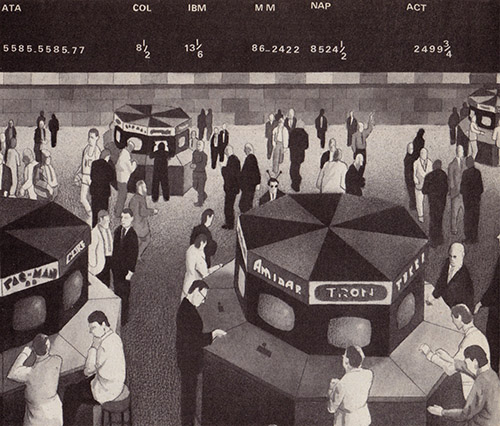
On paper, it’s hard to understand this sudden disenchantment. Clearly, the video game is the hottest consumer electronics product since the digital watch. The most optimistic domestic sales forecast for master components (Intellivision, VCS, Astrocade, etc.) this year tops out at eight million units, and cartridge sales could well exceed 60 million pieces. Figures like these are enough to make even the most skeptical retailer smile. Yet Wall Street is not impressed. I’ll try to explain.
First, there is the issue of perception. Until a year ago, it was populary held on Wall Street that the video game business was a high technology industry, and that the lack of compatibility of hardware and software stood as a barrier to the entry of many new competitors. While those of our readers in the trade may be surprised by the Street’s naiveté, the belated recognition that compatibility had arrived and the industry would now be open to widespread competition had an impact of far-reaching importance. Activision was the first to prove that nobody in the business has a lock on the kind of know-how it takes to create a winning game. Stripped of the high technology banner, the shares of the industry pioneers were suddenly perceived as no longer as valuable as they once were.
Second, there is the dual question of market saturation and the level of competition for retail shelf space. Just how large is the domestic market for video games? It is frequently noted that some 80 million households have television sets. But how many of them can safely be included in the potential TV-game playing universe? What about the elderly, the poor, singles and those homes without children? By the end of 1982, consumers could own 15 million master components. Translation: unit sales will have doubled for the third consecutive year. That rate will not be maintained.
At the same time, the number of pieces of equipment available has increased dramatically. Eight companies exhibited video game hardware at the summer Consumer Electronics Show, and new-improved systems are being shipped or have been announced by three of the entrants. The situation in cartridges is even more congested. More than twenty companies are offering products, with a roster of titles well in excess of what the current universe of hardware can sustain. Wall Street expects a shake out accompanied by price cutting. None of this can be expected to accrue to the short-term benefit of the survivors. Put bluntly, every Atari-compatible cartridge that is sold is one less sale for Warner.
Finally, we come to the future. Is the home computer going to take over the industry and dominate the market? Will the overseas market develop as promised? How many cartridges can be sold each year and who will have the “hot property?” Without going into great detail (these questions will be addressed at length in future articles), it is sufficient to note that these questions give reason for uncertainty, and Wall Street hates uncertainty.
In summary, it should be pointed out that while the industry has broadened and sales have boomed, Wall Street is looking over the horizon and is not totally happy with what it sees. Video games are here to entertain. So are its direct competition: records, movies, toys and other leisure-time activities. Some professional investors, recognizing this after-the-fact, have simply begun to adjust their strategy accordingly.
—David Leibowitz, V.P.,
American Securities Corp.
Source Pages







